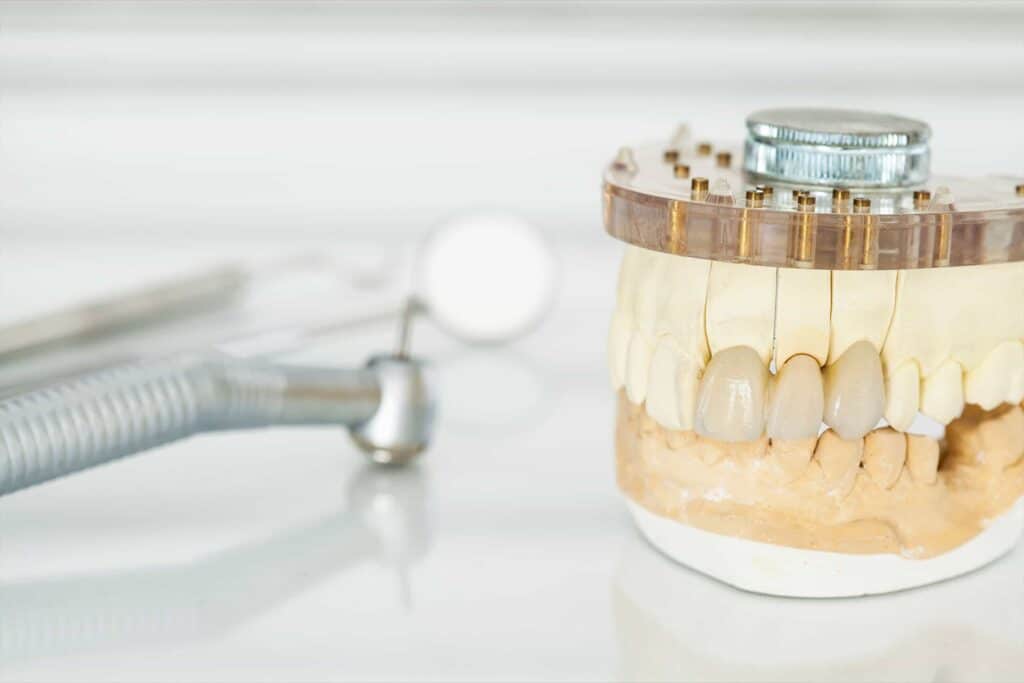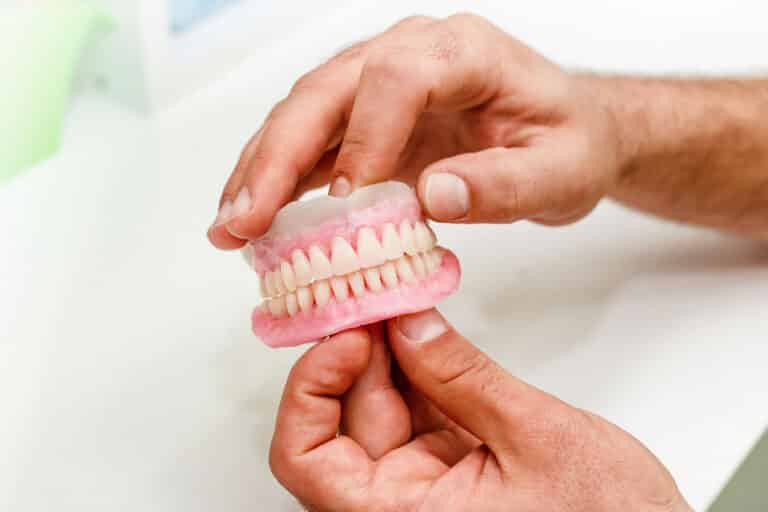Many adults in the United States (and worldwide) have calculus, also known as dental tartar. Dental tartar is a calcified deposit that forms on the teeth and gums. Proper dental care can reduce the amount of tartar that builds up on the teeth.
A dental professional has to remove tartar once it forms, as it’s adhered firmly to the tooth’s surface. Though removing tartar will likely always be a part of semi-annual checkups, there are ways to prevent it from forming out of control.
What is Tooth Tartar?
Tartar mineralized plaque that is porous, rough, and typically appears yellow or brown in color. Tartar forms above and below the gumline as a deposit on the teeth due to the minerals in the saliva. Tooth-damaging plaque and bacteria become problematic to remove when tartar forms.
As we age, plaque, bacteria, and tartar deposits build faster, and your dentist must remove them through the scaling process. If dental plaque isn’t removed daily, it turns into tartar via a lack of oral hygiene, flossing, and brushing.
In addition to making it harder to brush and floss properly, dental tartar encourages bacterial growth which can lead to cavities and gum disease. The bulk of this article will discuss how to beat tartar before it forms through proper oral care and regular dental checkups. Struggling with tartar is frustrating from a health and aesthetics perspective, but a little time invested makes a huge difference.
What Causes Tartar?
Tooth tartar forms from a buildup of dental plaque that gets hardened from minerals in the saliva. If the plaque accumulation on the teeth is not removed regularly, minerals from the saliva deposit into the plaque. Within a day or two, the soft plaque will harden, resulting in tartar.
How Can I Prevent Tartar?
We can do a few things at home to prevent tartar from forming on the teeth, though it’s nearly impossible to keep it away completely. To combat tartar, we should:
- Brush every day, twice a day, for two minutes at a time
- Invest in an electric toothbrush
- Use tartar-control toothpaste with fluoride
- Floss daily
- Rinse daily with an antiseptic mouthwash
- Keep our diets in check, as bacteria thrive on sugary, processed food and drink
- Stop smoking
- Visit the dentist at least twice annually for a cleaning
Tartar prevention is all about staying on top of a routine. When we take the time to care for our teeth, it gets a lot easier to control the accumulation of tartar. Remember, once tartar forms, removing it without assistance is nearly impossible.
How Do I Remove Tooth Tartar?
The only way to effectively remove tartar from your teeth is to schedule an appointment for a cleaning. When tartar builds, the dentist must scrape the teeth professionally. Attempting to remove tartar at home may result in either burnishing the tartar which makes it harder to remove, or may result in damage to the gums or teeth.
Using a combination of hand-held and vibrating dental scalers, which most people know as the dental tool with the hook on the end, dental professionals scrape away tartar. If there’s an excessive amount present with periodontal disease, the dentist will recommend a deep cleaning with scaling and root planing.
However, keeping a solid oral hygiene practice at home can prevent plaque from literally sticking around and forming into tartar. Dental floss is a critical component of this routine as it removes plaque from between the teeth.
Are There Any Home Remedies that Work to Remove Tartar?
Many home remedies and products are available today that promise to effectively reduce the amount of tartar on the teeth. While some of these could work, it’s unclear how safe they are or how they could affect our smiles in the long run. The technique of removal also plays a critical role, which requires proper training to ensure the tartar is properly removed without damage.
The best way to remove tartar is to see the dentist twice a year, or more, depending on a dental evaluation. Though it’s impossible to get rid of tartar through brushing and flossing, these are the best methods for preventing plaque, which turns to tartar. Preventing the formation of tartar will reduce the need to remove tartar.
Removing Tartar Without a Professional
Many people have attempted to remove tartar themselves, with varying degrees of success. Just because the dental tools are available to remove tartar doesn’t mean you should. Trying to remove tartar without professional help can result in burnishing it, which means removing only the outermost layer and smoothing out the surface.
Burnished calculus can be super difficult to remove, even by a dental professional, because the sharp edge of the instrument slips over the smoothed surface, resulting in a longer removal time. Additionally if improper technique is used, damage to the teeth, any dental restorations, or gums may result.
Staying on Top of Tartar
Staying on top of plaque removal is the best route to tartar prevention. A well-established oral hygiene process is the only way to do this, including seeing the dentist regularly. Tartar can be challenging, but it doesn’t have to lead to long-term problems. Regular care is the key to prevention!





